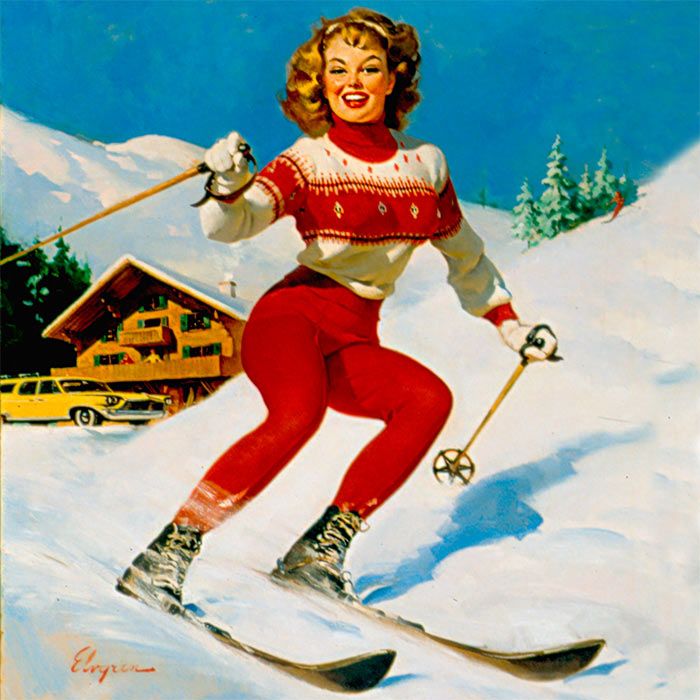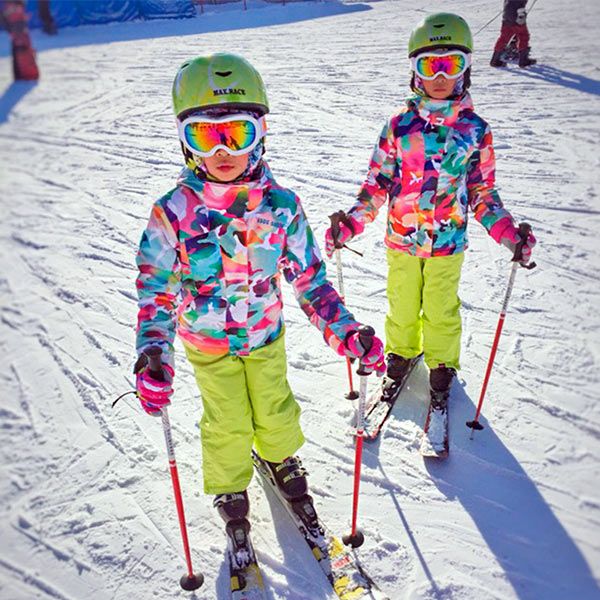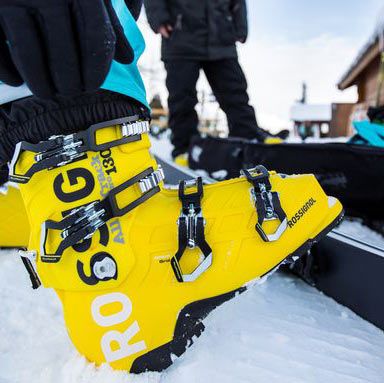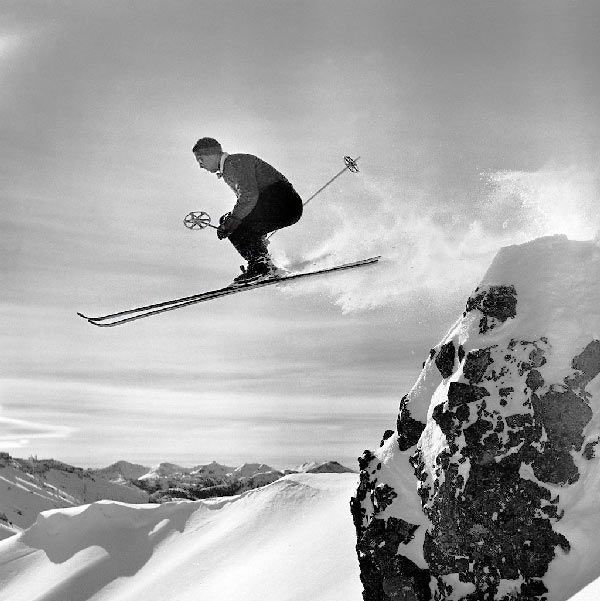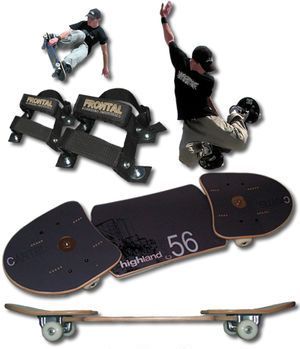 Streetboard
The variety of different “boards”—platforms for moving across solid surfaces, snow, or water—has become somewhat dizzying.
Streetboard
The variety of different “boards”—platforms for moving across solid surfaces, snow, or water—has become somewhat dizzying.
The number of professional and amateur sports disciplines associated with these gear types is also growing. Nevertheless, the inventive itch among fans of this active pastime hasn’t subsided, and nearly every year, new models are presented to thrill-seekers.
Sometimes, these are simply upgrades to existing designs, enhancing their performance characteristics. But occasionally, constructors take entirely unexpected approaches, using different principles for generating movement.
What is a Streetboard
 A photo of a streetboard
From afar, a streetboard might resemble a familiar
skateboard
—a similar board platform with two pairs of wheels.
A photo of a streetboard
From afar, a streetboard might resemble a familiar
skateboard
—a similar board platform with two pairs of wheels.
Indeed, this newcomer among rolling boards has retained some traits of its predecessor. But first impressions can be deceiving—there is a significant difference both in the device’s construction and in its principle of motion.
Can you move horizontally on a classic skateboard, without pushing off the ground or resorting to towing? It’s unlikely. But with a streetboard, it’s effortless—and not only that, you can even climb inclines with it.
The idea to deeply redesign the skateboard’s construction came to two young enthusiasts from Johannesburg, South Africa—students Oliver Macleod-Smith and James Fisher—in the early 1990s.
“Why not separate the board’s front and rear suspensions and make their positions independent of one another?”
No sooner said than done! For each pair of wheels, they created its own movable platform (kick plate or foot plate) connected to the others via hinges using a plastic beam—called a deck (cross-bar).
Movies about skaters Check out the list of the best movies about skaters at this link.
Snowboard or skis—which is better to choose and where should you start if you’ve never tried either? Find the answer in this article .
Thus, they essentially created a skateboard divided into three sections, with movable front and rear platforms.
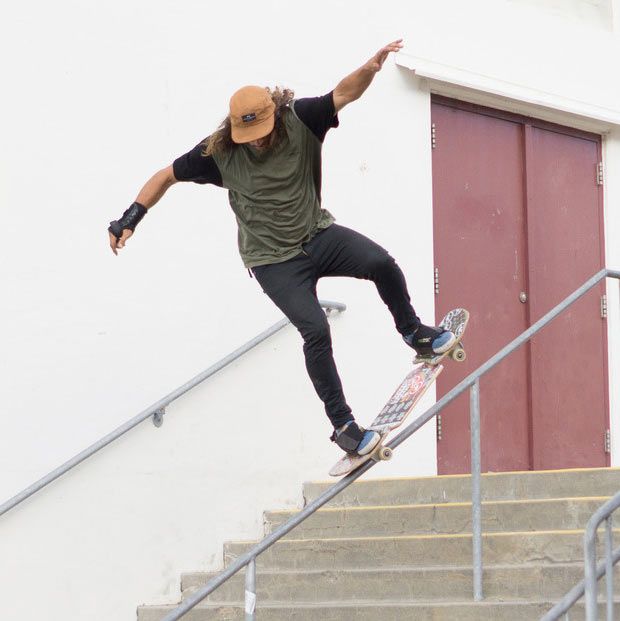 Snakeboard
The design was a success and exceeded the expectations of its creators—on this new gear, you could move without pushing off the ground, using zigzag maneuvers that mimic the movement of a snake. Hence the name snakeboard (from the English word “snake”).
Snakeboard
The design was a success and exceeded the expectations of its creators—on this new gear, you could move without pushing off the ground, using zigzag maneuvers that mimic the movement of a snake. Hence the name snakeboard (from the English word “snake”).
The young innovators even founded a company, “Snakeboard USA”, and launched mass production for their snakeboards.
The new boards quickly gained a following, and regular competitions began to be held, even at a reasonably high level.
Modern streetboards differ from the initial snakeboards mainly in the shape and construction of the cross-bar—it was originally just a profile bar between the two platforms, made of plastic or metal. The early boards clearly lacked the necessary durability.
Additionally, snakeboards in their early days didn’t come with foot bindings. While movement was possible without these, performing even the simplest jumping tricks was out of the question.
 Dimention Boards Logo
This board underwent further development in the 2000s at the company “Dimention Boards”.
Dimention Boards Logo
This board underwent further development in the 2000s at the company “Dimention Boards”.
The design and appearance of the gear were slightly altered—the cross-bar became broader, taking on more of a platform style, and it was constructed from laminated wood. The hinge mechanisms were also improved.
Over time, soft bindings for the athlete’s feet appeared on the mobile platforms. The board even acquired a new name—streetboard.
Streetboard production expanded, and numerous amateur and even professional sports clubs emerged. Streetboards gradually began to spread into Russia.
This, of course, is still a niche activity in Russia, lacking extensive advertising, but enthusiasts manage to acquire them, and some are even attempting to make the boards themselves.
How to choose a longboard Learn how to choose a longboard when making a purchase, by exploring the pages of this site.
Curious about waveboards and how to ride one? Find out more here . The weather doesn’t always allow you to take your board outside. But for a fingerboard, you don’t need much space—your computer desk will do.
More About the Construction of a Streetboard
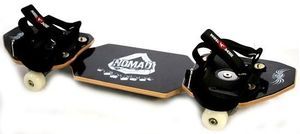 Streetboard Construction
A streetboard is a dynamic structure consisting of three interconnected boards (decks).
Streetboard Construction
A streetboard is a dynamic structure consisting of three interconnected boards (decks).
The Front and Rear Deck (foot plates) are perfectly symmetrical in shape. They are made from high-quality hard plywood or composite materials (plywood-polymer). The front part of the foot plate is slightly curved, similar to a ski.
The Cross-Bar is the central deck of the streetboard. It is made of the same strong materials as the foot plates. It features “ears” at the front and rear for hinge connections to the front and rear decks.
Hinges, which allow the platform’s structure to move, may utilize traditional rolling bearings (needle or ball bearings) or modern Teflon sliding bearings. The hinge connection enables the foot plates to tilt up to 35–40 degrees in both directions from the central axis of the board.
A metal truck—typically made from aluminum alloy—attaches to the underside of each foot plate using screws. This truck includes an axle (or two half-axles) for the wheels.
Streetboard Wheels are based on polyurethane and are available in various levels of hardness depending on the surface type, such as asphalt or artificial tracks in skateparks. The wheels are mounted on the truck axles with standard rolling bearings.
Foot Bindings are located on the top surface of the foot plates, ensuring the athlete’s feet are positioned directly above the hinge axis of the decks.
Modern streetboard models adhere to several standards:
- World Streetboard Association (WSA)
- Lowboard New Standard ‘12 (LNS-12)
- GrossoPivotboardStandard (GPS)
The differences are not significant—models vary in dimensions, proportions, truck height, and deck materials.
In modern LNS-12 streetboards, hinge axle centers are shifted 10 mm toward the center from the wheel axles, significantly strengthening the structure without compromising performance.
Rope Jumping Base jumping, rope jumping , bungee jumping—for those who crave adrenaline!
Learn how to choose the right tires for your bike in this article .
How to Ride a Streetboard?
 How to Ride a Streetboard
While streetboarding requires well-coordinated movements of the legs, arms, and body, the technique is not overly complicated and is typically easy for beginners to pick up.
How to Ride a Streetboard
While streetboarding requires well-coordinated movements of the legs, arms, and body, the technique is not overly complicated and is typically easy for beginners to pick up.
It’s especially helpful for those with prior experience on other types of boards, as they have already tackled the challenge of maintaining balance.
Decide which foot will be positioned at the front. If you’re unsure, conduct a small experiment—run and slide on a slippery surface (ice, tile, or wood flooring, etc.). Your body’s natural response will guide you; the correct foot will instinctively land in front. Generally, right-handed people lead with their left foot.
For your first attempt on a streetboard, you don’t need to strap in—no tricks will be performed initially, and you might need the ability to quickly jump off if necessary. Place your foot so that the hinge washer (kingpin) is centered beneath your sole.
The first preparatory exercise involves synchronously sliding your feet toward the center and then outward to their limits. The movements should be smooth and simultaneous with no jerks. At the same time, maintain balance.
The next exercise is moving your torso and arms. Initially, you can fully extend your front arm horizontally to gain leverage. Rotate your shoulder entirely outward, then draw it inward toward your chest. This is quite simple as long as you can maintain body balance.
Once you’ve mastered basic exercises, combine arm and leg movements. Everything should be synchronized: toes move inward—front shoulder is drawn to the chest; toes move outward—shoulder and arm are extended outward with maximum amplitude. The main effort to move the board comes from the athlete’s torso movement.
When everything starts to come together, make a stronger shoulder movement to gain momentum—and that’s it! The streetboard begins to move, carving zigzags and gradually picking up speed.
To make this even clearer, watch the video:
https://www.youtube.com/watch?v=68SPq7UDWys
You’ll get the hang of it for sure! Once you cover the first few meters successfully, experience and beautiful riding technique will follow.
